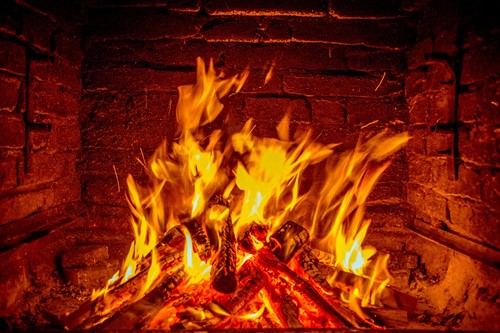
Chilly fall and winter nights are a great time to use your fireplace, but it's important to do so safely. Fireplaces can be hazardous regarding house fires, burns, carbon monoxide leaks and other dangers. Before using your fireplace, make sure you're familiar with the following safety tips.
Your fireplace should be cleaned and inspected every year to ensure it's in good condition and safe to use. Wood-burning fireplaces need to be cleaned to remove soot and creosote buildup, which can cause house fires. Gas and electric fireplaces should also be inspected each year to identify potential safety issues and have them repaired before using them. All fireplaces should be checked for nests or other obstructions in chimneys.
Flammable items can quickly catch fire when they're close to fireplaces, such as when sparks or ashes fly out. Keep any flammable material or items away from your fireplace before you use it.
When you have a wood-burning fireplace, use smaller, dry and well-aged pieces of wood. Damp or green wood produces more smoke and can cause soot to accumulate inside your chimney. Smaller pieces of well-aged, dry wood don't produce as much smoke, resulting in a safer and cleaner burn.
A mesh screen or curtain helps keep ashes from flying out of your fireplace and onto carpeting, furniture and other surfaces. These screens also help reduce the risk of burns.
Avoid leaving your fireplace unattended when you have a fire going. Stay in the room as much as possible while it's burning, and make sure the fire is fully out before you leave your house or head to bed.
Wood-burning and gas fireplaces can be a source of carbon monoxide leaks. Carbon monoxide detectors can help you avoid any leaks and ill-effects by alerting you to any issues. You can then move your household outside and have the issue corrected. Avoid going back into your home until there is no trace of carbon monoxide in the air.

Aryn Hellmund is an Austin native and graduate of Westlake High School. Growing up as the child of a realtor exposed her to Austin’s residential real estate scene early in her life and today she still finds herself bouncing marketing ideas off of her mom.
Aryn holds a GRI* designation and brings all of her experience and valuable skills to COMPASS RE || Austin Residential Group. Working with Heather Hudson and a dedicated team of realtors who work together seamlessly to always exceed their clients’ expectations.
Although she feels comfortable assisting clients in many areas of Austin, Aryn is especially familiar with her old Westlake neighborhoods of Rob Roy, Lost Creek, Rollingwood, Thousand Oaks and Commons Ford. In addition, she has lived in and is familiar with Barton Creek, Tarrytown, Pemberton, Circle C, Northwest Hills and now lives in Southwest Austin near Bee Cave, Spanish Oaks, and Lake Travis.